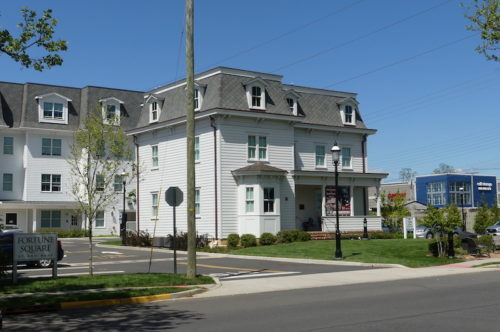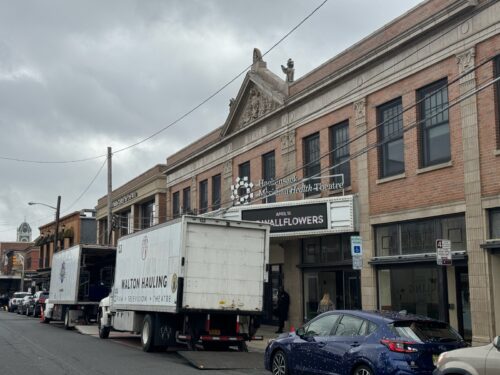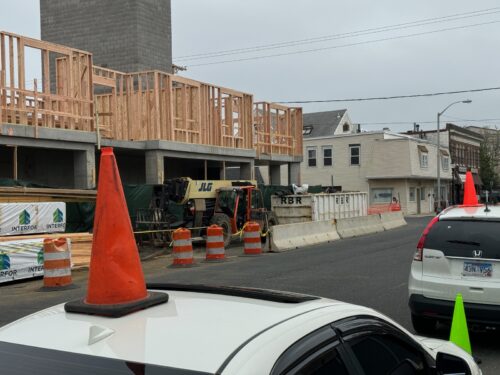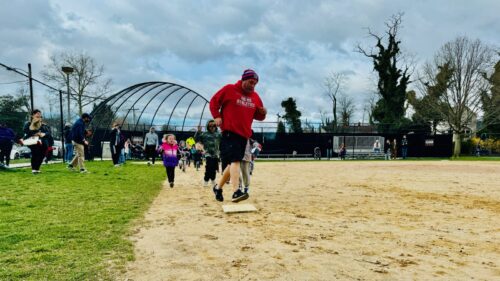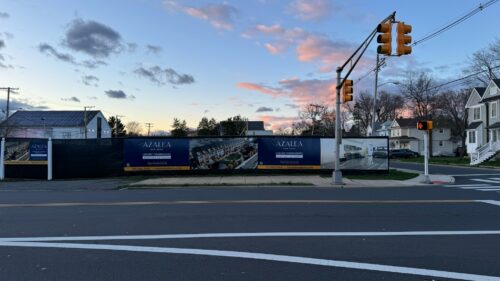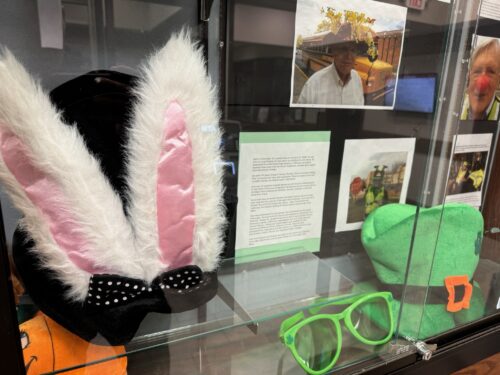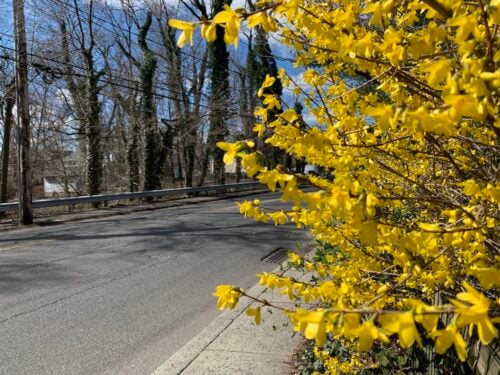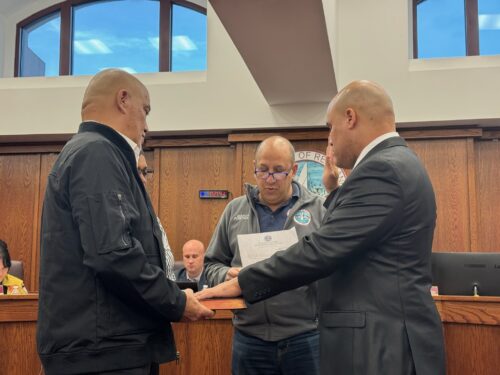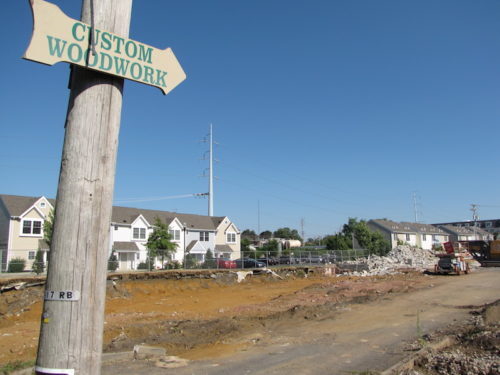
By JOHN T. WARD

Among the structures razed was one that deserves a final flick of the lighter from rock music fans. In the early days of rock ‘n roll, the building at 10 River Street churned out low-priced but distinctive-sounding electric guitars, some of which helped launch the careers of rock superstars such as Jimi Hendrix and Jimmy Page.
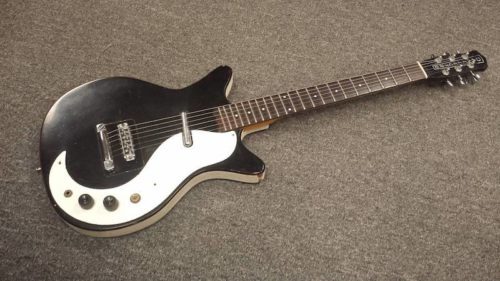

The company, launched in 1947 as an amplifier manufacturer, was the brainchild of Nathan Daniel, a former civilian engineer for the Army Signal Corps at Fort Monmouth. Its first home was at 131 Drs. Parker Boulevard, now Detour Framing.
Under a deal with retailer Sears, Roebuck & Co., Daniel sold his amps through the company’s ubiquitous catalog. “And one day, they said, ‘hey, do you have a guitar, too?'” Danelectro historian Doug Tulloch told redbankgreen in a 2017 interview. He didn’t, but in 1954, Daniel started mass-producing guitars.
Though he didn’t play any instrument, Daniel turned out to have a knack for innovation in the field. To keep the poplar necks of his guitars from warping, for example, Daniel concealed two steel I-beams inside them. That added stability also meant the necks could be slender, allowing for the hands of young learners to wrap around them.
He was dogged about cost control, which led him to incorporate into his guitars inexpensive materials like Masonite and vinyl finishes, his son, Howard Daniel, told redbankgreen in 2017.
Daniel also developed the company’s trademark “lipstick tube” pickups — the wire-wound magnets that turn string vibrations into amplified sound. Tulloch, a Danelectro collector and author of “Neptune Bound: The Ultimate Danelectro Guitar Guide,” said it’s a myth that the shiny casings were surplus lipstick tubes, but they looked great and provided a distinctive jangle.
Sold under the Danelectro name and through Sears and Montgomery Ward under the names Silvertone and Airline, “they were budget guitars,” said Tulloch. “It was going to be everybody’s first guitar.”
“Everybody,” it turned out, included Hendrix. In his pre-fame days as a parachutist in the 101st Airborne, Hendrix is said to have used his treasured Danelectro to replicate the sound of the rushing wind he heard during jumps, which helped forge the signature sonics more popularly associated with his Fender Stratocaster.
Much as he did as a younger man, former Yardbirds and Led Zeppelin axeman Page wields his vintage 1961 model 3021 while recreating the origins of the song “Kashmir” in a scene from “It Might Get Loud,” a 2008 documentary that features him, Jack White of the White Stripes and the Edge of U2 sitting around, talking about guitars and, of course, cranking them up.
The guitar designs were as varied as the musicians who used them, Randy Bachman of Bachman Turner Overdrive; the guitarists from Television; Elvis Costello; Beck: the roster of players who’ve cut records and performed with Danelectros is long and studded with big names. Not to mention the Ladybirds, an act from the mid-’60s who favored ‘Danos’ and got some attention as “the world’s first all-girl topless band.”
Daniel’s impact on popular music is pretty ironic, Howard Daniel wrote in a preface to Tulloch’s book, “in light of the fact that he played no instrument himself, and preferred music by composers like Mendelssohn and Rimsky-Korsakov.”
Howard Daniel, who resides in California, said he remembers going to work in the River Street factory “as soon as I got a work permit at age 14” in August, 1958. Like all other employees, he started out at $1 an hour, nailing together speaker baffles.
“I did it all week and got blisters on my palms for the effort,” he said.
The company remained at the location until it moved to Neptune City around 1960, Daniel recalls. At its peak, it was reported to have 500 employees producing a trailer truckload of guitars and amps every day.
The shipments also included oddities like a six-string bass; a guitar with an amplifier built into its carrying case; and a “Bellzouki,” a 12-string guitar that sounds like a Greek bouzouki.
Nathan Daniel sold his company to the Music Corporation of America in 1966. Three years later, MCA permanently shut down the guitar making operation after an unsuccessful change in its distribution model. Another company bought the Danelectro name in the 1990s and makes replicas of the originals. Meantime, a Nathan Daniel original that sold for $64.95 in 1955 can fetch many times that price today.
Howard Daniel wrote in a 2016 blog post that his father, who died in 1994, “was devoid of interest in fame or publicity, and after Danelectro closed down in 1969, he simply got on with his life.” That included designing experimental oceangoing ferries, which he patented.
Even among rock and guitar aficionados, the River Street Danelectro plant is something of an interesting footnote.
“I’d be more upset if the Neptune factory was being knocked down,” Tulloch said, “but it all means something.”
Developer Roger Mumford‘s 22-unit townhouse project, called the Brownstones, won zoning board approval last September, and is expected to be ready for occupancy beginning in the first half of 2019.



